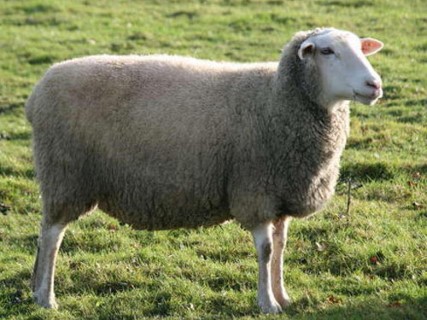Leineschaf, also known as Leine sheep or simply Leine, is a breed originating from the Nordheim region of Hannover, Germany, specifically from the picturesque Leine river valley from which it takes its name. This breed holds a significant place in the local agricultural heritage, embodying the culmination of careful crossbreeding efforts and adaptation to the region's unique environmental conditions.
The development of Leineschaf involved a deliberate breeding program that combined local sheep breeds with rams imported from various regions, including Friesian, Merino, Berrichon du Cher, English Leicester, and Cotswold breeds. Through meticulous selection and strategic mating, breeders aimed to create a versatile and resilient sheep ideally suited for both meat and wool production.
Leineschaf is characterized by its distinct white coloration and hornless phenotype, representing a harmonious blend of the diverse genetic influences that contributed to its creation. This breed exhibits medium-early maturation, allowing for efficient utilization of resources and timely production cycles in agricultural operations.
The wool of Leineschaf is uniform in texture, presenting a medium-coarse quality that is well-suited for a variety of textile applications. Despite its coarseness, the wool retains a desirable level of uniformity, contributing to its versatility and practicality in traditional and modern fiber-related industries.
One of the standout traits of Leineschaf is its remarkable hardiness and adaptability to challenging environmental conditions. These sheep are well-equipped to thrive in rugged landscapes and are known for their endurance and resilience, making them particularly suitable for extensive grazing systems and long-distance movement.
Despite its historical significance and valuable traits, Leineschaf faces the risk of extinction in Germany, highlighting the importance of conservation efforts to preserve this unique breed and safeguard its genetic diversity for future generations. Efforts to raise awareness and promote the conservation of Leineschaf are essential to ensure the continuity of its legacy and contribution to the cultural and agricultural heritage of the region.
